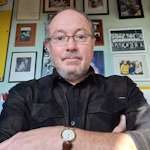Source: Shutterstock.
Well-known drugs such as penicillin, lovastatin and cyclosporine are just three examples that derive from fungi. However, fungi, and especially their filamentous incarnations, are hard to manipulate at a genetic level because their genes usually are governed by complex regulation mechanisms.
Researchers at Rice University, Houston, have a long track record of working to unlock the chemical and biochemical potential of fungi. Now, a breakthrough by chemical and biochemical engineers at the university makes it easier to isolate new chemical compounds from fungi, potentially opening the door to many more novel drugs and other useful chemicals.
Writing in a recent issue of the Journal of the American Chemical Society, Xue Sherry Gao and her colleagues at Rice’s Brown School of Engineering point to increasing evidence that several epigenetic — i.e. gene control — modifications often act cooperatively to control how fungal genes operate. However, they add, the ability to predictably manipulate multiple genes simultaneously is still largely limited.
“To me, the fungal genome is a treasure,” Gao says, referring to the significant medical potential of fungi-derived compounds. “However, under most circumstances, fungi ‘keep to themselves’ in the laboratory and don’t produce the bioactive small molecules we are looking for. In other words, the majority of genes or biosynthetic gene clusters of interest to us are ‘cryptic,’ meaning they do not express their full biosynthetic potential,” she elaborates.
So for the first time, Gao deployed multiplex base-editing (MBE) as a tool for mining fungal genomes for medically useful compounds. Compared to single-gene editing, the MBE platform reduces the research timeline by over 80% in equivalent experimental settings, from an estimated three months to roughly two weeks, she explains.
In this work, the platform significantly improves the capability and throughput of fungal genome manipulation. For example, using MBE to inactivate three negative epigenetic regulators combinatorically in the fungus Aspergillus nidulans enabled activation of eight cryptic gene clusters compared to the wild-type strains.
“The genetic, epigenetic and environmental factors that instruct organisms to produce these bioactive natural products (NPs) are extremely complicated in fungi,” Gao explains. However, using the MBE platform, her team can easily delete several of the regulatory genes that restrict the production of bioactive small molecules. “We can observe the synergistic effects of eliminating those factors that make the biosynthetic machinery silent,” she notes.
The disinhibited, engineered fungal strains used in this research produced many more bioactive molecules, each with their own distinct chemical profiles, than possible with traditional genetic engineering technologies. In fact, five of the 30 NPs generated in one assay were new, never-before-reported compounds. One, for example, they describe as harboring unique cichorine (a phytotoxin) and polyamine hybrid chemical scaffolds.
“These compounds could be useful antibiotics or anticancer drugs,” Gao says. “We are in the process of figuring out what the biological functions of these compounds are, and we are collaborating with groups in the Baylor College of Medicine on pharmacological small-molecule drug discovery.”
The latest breakthrough followed another in 2021, which also focused on gene clusters in a fungus genome. That study focused on a bioactive NP known as 21R-citrinadin A, discovered in 2004 in a marine-derived fungal strain of Penicillium citrinum. It is toxic to leukemia in mice and human lung cancer cells. Here, the researchers isolated a biocatalyst known as CtdE after identifying it as the natural mechanism that controls the chirality — and therefore effectiveness — of compounds the fungus produces.
Understanding how it works in fungi and analyzing its structure could give scientists, particularly those who design drugs, a new chemical synthesis tool.
“All the genes responsible for expressing this small molecule are clustered together in these fungi, so first we found the gene cluster and looked at each gene individually to see which one could be the most important to catalyze the specific chemical transformations,” shares Gao.
“Once we find it, we can take that gene outside of the fungus, put it back into a user-friendly host, E. coli, and then use protein purification technology to isolate and test its function in a test tube. By doing everything outside of the fungus, we can be sure there’s only one enzyme that performs this one function,” she adds.
The modified E. coli express CtdE protein in bulk. When subsequently used in chemical transformations, CtdE catalyzed the desired stereoselectivity across the board.
Sponsored Recommendations
Sponsored Recommendations



